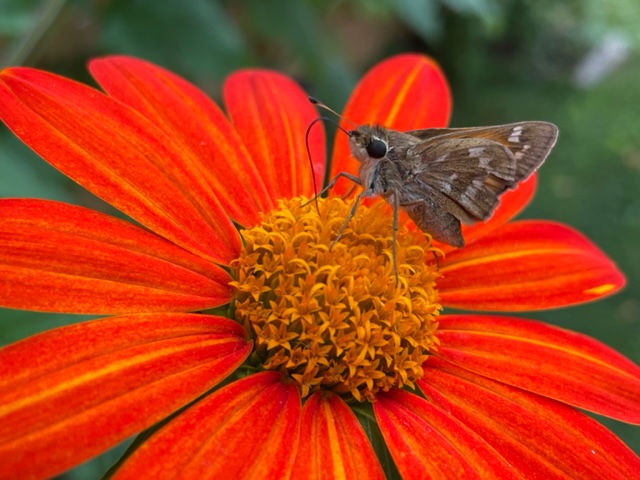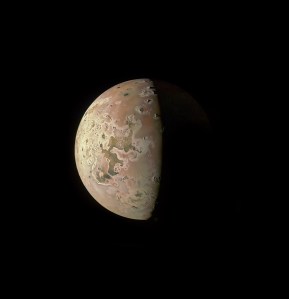Joshua Schlieder: Feet on the Ground, Head in the Stars
Goddard astrophysicist Dr. Joshua Schlieder supports NASA's Roman Space Telescope and Swift Observatory with creativity, community, and curiosity.

8 min read
Preparations for Next Moonwalk Simulations Underway (and Underwater)
Name: Joshua Schlieder
Title: Wide Field Instrument Scientist for the Nancy Grace Roman Space Telescope and Operations Project Scientist for the Neil Gehrels Swift Observatory
Formal Job Classification: Research Astrophysicist
Organization: Stellar Astrophysics and Exoplanets Laboratory, Astrophysics Division, Sciences and Exploration Directorate (Code 667)

What do you do and what is most interesting about your role here at Goddard? How do you help support Goddard’s mission?
As the Wide Field Instrument scientist for the Roman Space Telescope, I am a member of the project science team and work with other scientists, engineers, and managers to ensure that the Wide Field Instrument, the primary wide field survey camera on Roman, meets its science requirements.
As the operations project scientist for NASA’s Swift Observatory, I work with the principal investigator and project team to ensure that Swift is operating efficiently and obtaining data to meet our science goals and the needs of the astrophysics community.
I also do fundamental astrophysics research focusing on low-mass stars and their exoplanets.
What is your educational background?
From a very young age I was fascinated by the natural world and was constantly trying to understand how it worked. There wasn’t a question I wouldn’t ask or a rock I wouldn’t turn over to understand a little more. This curiosity led me to a B.S. in physics from Bloomsburg University in Pennsylvania. I then received an M.A. and Ph.D. in physics with a concentration in astrophysics from Stony Brook University in New York.
How did you come to Goddard? Why do you stay?
From 2014 – 2016, I had a postdoctoral fellowship at NASA’s Ames Research Center in California to develop science programs for the James Webb Space Telescope and analyze data from the exoplanet hunting K2 mission. In 2016, I went to the NASA Exoplanet Science Institute at the California Institute of Technology as a member of the Exoplanet Archive team. In 2017, I came to Goddard to work on the latest exoplanet hunting mission, TESS, the Transiting Exoplanet Survey Satellite.
Goddard is truly unique compared to other academic institutions. It has an outstanding scientific environment where you can perform cutting edge astrophysics research and directly contribute to developing and implementing NASA missions.

What is most interesting about your role on Roman?
We are working to build and test a new scientific instrument that will fly on a space telescope. I have the privilege of contributing to this effort and working with really excellent people from all disciplines. We combine our different scientific and technical backgrounds to solve difficult problems.
I am never bored (but sometimes stressed). Every day is a new adventure.
What is most interesting about your role on Swift?
Swift has been operating for many years. I enjoy working on a team that is a well-oiled machine. The observatory is dynamic, it is always doing something new and can observe about 100 targets each day. Unlike many space telescopes, it can rapidly respond to astronomical events and re-point very quickly, delivering new science on short notice. Swift was designed in a way that enables it to observe many different types of targets over a wide range of wavelengths and it is exciting to be a part of the planning and execution of its diverse science program.
What basic astrophysics research do you do? What is the one, big discovery you would like to make?
I study red dwarf stars and the exoplanets that orbit them. Red dwarfs are a class of star that are generally about half the size of the Sun or smaller, very faint, and have red colors because of their relatively low temperatures. Red dwarfs are everywhere, they make up more than 70% of the stars in our galaxy! But, because they are not very bright, you cannot see them with the naked eye. I also study exoplanets. Exoplanets are planets that are outside our solar system orbiting other stars. We know of many exoplanets that orbit red dwarf stars. It is common to find a red dwarf with several Earth sized planets in a compact system that would easily fit inside the orbit of Mercury in our solar system.
I hope someday that the astrophysics community will detect enough planets around red dwarf stars to truly understand the population and disentangle how such small stars can form so many planets. Since red dwarfs are the most common type of star, most planets in the galaxy orbit them. They may be our best opportunity to find planets that are similar to Earth and are close enough to study in great detail.

What makes a good astrophysicist?
You have to be imaginative and think outside the box but also learn from criticism. You have to enjoy collaborating with many people because the best ideas come from the combined efforts of people with different backgrounds and different experiences.
You need a deep desire to push forward to understand the unknown, even if you do not know what path you may follow. You need to have a drive for new knowledge and an ability to go in different directions at the same time to solve a problem.
You have to embrace big ideas. What in the universe is waiting to be understood? How do I take what I know and work with other people to try to figure it out? Astrophysicists are both linear and abstract thinkers. In general, we have to be abstract in coming up with ideas and linear in solving them but many times we rely on both ways of thinking.
We also have to be able to explain these ideas to others in the community and the public. Communicating our work and explaining why it is important is a critical skill.
As a mentor, what is the most important advice you give?
Trust in your own ideas and abilities. You will run into setbacks and difficult times when projects are slow to move forward or even regress, but every day is progress and you will get there.
You have to expect, accept, and learn from constructive criticism. When someone pushses back on an idea, an approach, or a result, know that you are capable and use it as an opportunity to improve.
Ask questions, meet people, and build your community. Seek out those who may have the answers you need. You are not alone. Many people will be working on similar ideas, so work with them to see how everyone can build on an idea together. Being a scientist is tough, it is very competitive and everyone, whether they admit it or not, needs support. These people will be your support network.
Most importantly, take time for yourself. Research is never done, but that does not mean you should be doing it all the time. Having aspects of your life that are separate from astrophysics will keep you healthy and happy.

Who inspires you?
The early career scientists that I work with. They bring huge enthusiasm and new ideas to projects and are willing and able to dive into big problems. I am always impressed with their ingenuity, capability, and resilience. It is a privilege to work with people that are bound to be future leaders in the field.
What is your hobby?
I like to garden and grow outdoor plants. I like plants that produce fruit. I am growing several fig trees, a plum tree, a paw paw, and raspberry, blueberry, and goji berry bushes. I also grow tropical plants indoors including orchids, which can be difficult but rewarding.
I enjoy going on long distance bicycle rides and recently completed a 100 km “metric century.” I also love being outdoors hiking, camping, and fishing.
I also really enjoy minor league baseball, I try to see the local team in every city I visit. I have several dozen minor league team hats.
Who is your favorite author?
I read a lot of science fiction and fantasy novels. I especially enjoy books by N. K. Jemisin and Alastair Reynolds.
What is your “six-word memoir”? A six-word memoir describes something in just six words.
Feet on the Ground, Head in the Stars. (I know this is eight words, but I was struggling to fit one to six.)

Conversations With Goddard is a collection of Q&A profiles highlighting the breadth and depth of NASA’s Goddard Space Flight Center’s talented and diverse workforce. The Conversations have been published twice a month on average since May 2011. Read past editions on Goddard’s “Our People” webpage.
By Elizabeth M. Jarrell
NASA’s Goddard Space Flight Center, Greenbelt, Md.
Share
Related Terms
What's Your Reaction?












































